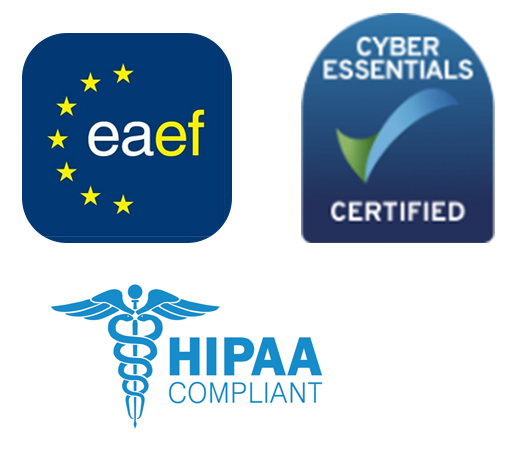
The wellbeing of content moderators heavily depends on workplace structures and policy design. Ensuring content moderator wellness is important, as moderators maintain the integrity and safety of online platforms.
Exposure to harmful content
Content moderators are repeatedly exposed to disturbing, graphic, and harmful content. Over time, this can lead to conditions such as vicarious trauma, PTSD symptoms, or secondary traumatic stress (STS). They rely on content moderation policy to comply with internal standards and external regulations.
Challenges to emotional wellbeing
Though policies should support moderators, they can sometimes hinder content moderators’ mental health and emotional wellbeing. Poorly structured or overly strict rules can create confusion and emotional strain.
Supporting emotional wellness for online moderators requires a layered approach. Policy structure and enforcement both impact how moderators cope on a day-to-day basis.
Content moderation guidelines aim to give users and moderators clear standards. These rules help shape respectful, safe communities when applied with care.
Clear policies for community protection
Policies guide how content moderators respond to harmful or abusive content. Well-written, consistent guidelines help them act with more confidence, while ambiguity or inconsistency increases stress and slows decision-making.
For policy developers, balancing freedom of speech while ensuring community safety on their platforms presents an ongoing challenge.
Psychosocial hazards in content moderation
Adhering to policy involves more than making a decision. It requires awareness of psychosocial hazards in moderation. There are several areas within policy development that can affect a moderator’s mental wellbeing and cognitive load. These include:
1. Gray areas within policy
A common stressor for CMs is deciding if gray area content violates guidelines. This often disrupts workflows, especially when handling moderate-severity content or dealing with policy ambiguity for UGC (User-Generated Content).
It can also limit productivity and affect decision quality, as moderators try to align with policy expectations.
Productivity and quality metrics have a direct impact on performance reviews. These are often tied to throughput quotas, with potential financial incentives like monthly bonuses for meeting or exceeding standards.
2. Frequency of updates
When updates are too frequent and close together, it can create a lack of stability for moderators. On the contrary, when updates are too far apart, the backlog builds, making it harder to absorb and apply changes without overload.
It requires mental capacity to understand the policy itself, learn the changes, and subsequently implement those changes immediately.
Because policies shift regularly, moderators are required to keep up with these ongoing changes, which can present as a unique occupational stressor.
3. Ethical dilemmas
Some content decisions can weigh heavily on moderators, especially when policy conflicts with personal values. This tension can lead to moral injury. For example, a moderator may suspect someone is scamming others on an online marketplace.
If the policy requires more proof than what’s available, they may have to leave the account active, despite strong personal doubts. They may feel pressured to overlook their personal values for the sake of adhering to policy, and the challenge lies in trying to balance the two.
They may also experience additional stress worrying about the implications of each action or inaction, especially when managing exposure to CSAM (Child Sexual Abuse Material).
The constant pressure to be ‘Guardians of the Internet’ and safeguard users, which brings its own set of expectations, can also contribute to compassion fatigue.
Practical tips for policy teams
Policy teams can support content moderators’ wellbeing by setting up dedicated wellness programs and developing specific risk reduction strategies for moderators.
Schedule quarterly updates and limits
- Share clear roadmaps with vendors when policies change. Schedule updates quarterly to reduce uncertainty.
- Set clear policy for content exposure limits as part of managing workload and shift planning.
- Consider the frequency of updates: If they occur once per year, updates may be overwhelming. If updates happen too frequently, there is no stability or chance to adapt to changes.
- Group related changes, such as those on fraud, hate speech, or terrorism, so teams can process updates more easily.
Provide trauma training and EAP
- Write policy documents that are easy and clear to implement.
- Training should include examples, practice materials, and content on managing stress. This might involve resilience training techniques and psychoeducation to help moderators process the emotional effects of their work.
- Ensure access to resources like an EAP for moderators (Employee Assistance Program).
- Build a strong foundation with wellness-focused onboarding.
- Provide manager training for trauma signs so they can respond appropriately.
- Consider resilience screening for moderators as part of a holistic support strategy, rather than exclusion.
- Respond quickly to questions during emergency updates that bypass standard processes.
Collaborative moderator wellbeing strategies
The more we consider how policy development impacts content moderators, the better we can safeguard them from these workplace stressors.
Keep policy and moderation teams connected
Open communication between policy teams and content moderators is essential to developing effective content moderation safety strategies.
Instead of only delivering updates or training, invite real conversations. Ask how recent updates or new policies have affected their workflow and what’s making their job harder – or smoother.
Develop tailored wellbeing programs
Go beyond operational questions. Explore how policies impact mental load, ethical tensions, and emotional fatigue. The creation of comprehensive wellbeing programs for moderators, tailored to their specific needs, should be a priority.
Collaborate with wellbeing service providers
Safeguarding moderators also requires well-being service providers like Zevo Health to understand the broader system that impacts their wellbeing.
When they understand these, providers can develop, implement, and evaluate solutions that support all stakeholders involved, including policy teams.
Embed preventative interventions and mental health literacy
Prioritize preventative wellbeing interventions and mental health literacy in trust & safety. Frameworks like ISO 45003 and trauma-informed care models can help make care proactive, not reactive.
Strengthen Moderator Wellbeing With Zevo Health
Content moderation policies and practices directly impact the mental and emotional wellbeing of content moderators.
Employers must build strong policies that protect psychological wellbeing, offer practical support, and promote supportive work culture policies to maintain a collaborative work environment.
Zevo Health connects policy with practice. Our tailored programs address both operational stress and psychosocial risks. To protect your moderation team, get in touch to learn how Zevo Health can help you build a care-first, policy-driven approach.
